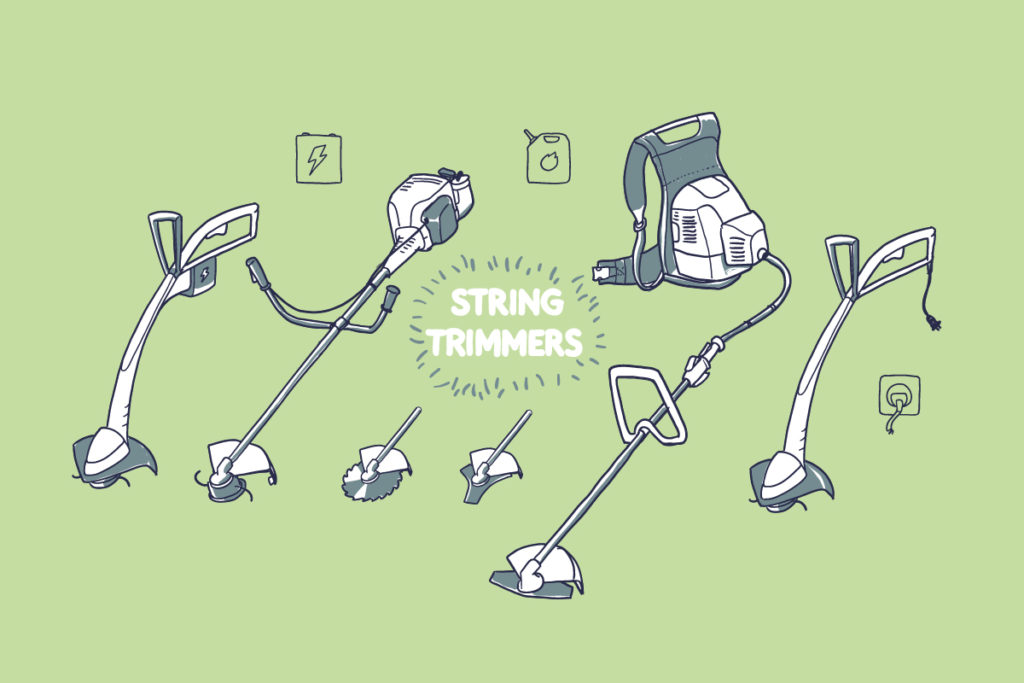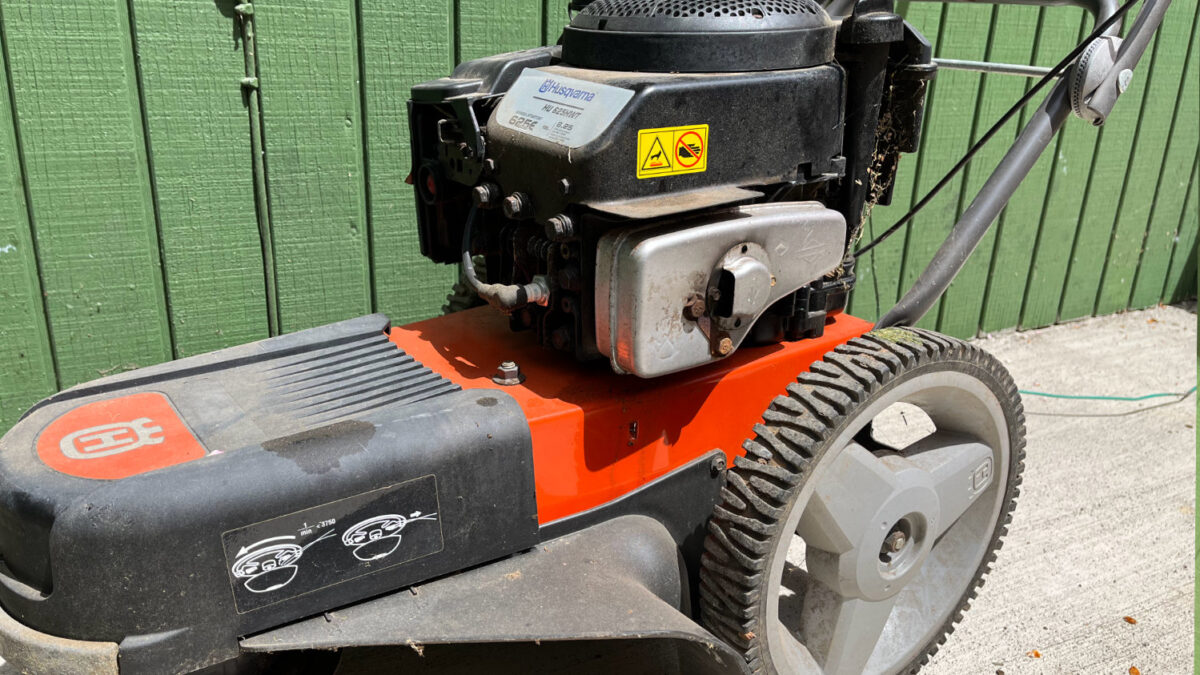Despite their appearance, wheeled string trimmers are not so complex compared to their handheld counterparts. These types of trimmers are hybrids between handle trimmers and traditional push mowers. In other words, they combined the best features of both. Nonetheless, depending on the intended usage, these trimmers have their drawbacks.
It is very important to know the difference between the three types of trimmers: handle trimmers wheeled trimmers, and mowers. They all have pros and cons. We will be covering most of them in this article. To better understand the befits, let’s first take a look at the design of the mower.
It is not a ”DR”!
Walk-behind or wheeled string trimmers are often referred to as DR Trimmer Mower, however, DR is a company and not the type. Although DR “Done right” is well known for making these types of trimmers, they are many other companies that produced them.
Why pick a handle trimmer?

For general usage, traditional handheld trimmers are the popular choice because the design is simple. You have an engine (2stroke or 4stroke) mounted at the end of a shaft and a trimmer head on the next end. This lightweight design makes it easy for most individuals to carry and maneuver the trimmer by hand. These types of trimmers (brush-cutter) can be divided into three categories which are: looped handle, bike handle, and backpack. All have their advantages but generally, work the same way.
Why pick a wheeled trimmer?
A wheeled trimmer applies the same concept with the engine mounted unto a frame on wheels. Sound familiar? Well, that’s because it is basically a mower minus the blade deck. This design allows for a much bigger engine, usually, a 4-stroke Briggs & Stratton found on most pushed mowers. Some companies like STHIL and Ryobi make a smaller 2-stroke version of these wheeled trimmers, however, it lacks the same power.
Besides more power, wheeled trimmers are popular for working on flat terrain. They allow you to cover a larger area without getting fatigued since you are just pushing. Some modern designs even have a self-propelled feature that makes it even more effortless to finish the task at hand.
Some disadvantages of wheeled trimmers
- While walk-behind trimmers have many benefits, they also have a few huge drawbacks. These types of trimmers are a bit more difficult to maneuver around obstacles and sloped terrains. Even with the self-propelled feature it may become a little difficult and in some cases dangerous to do so.
- Unlike most handheld trimmers, wheeled trimmers are generally bigger and heavier making them harder to transport. Additionally, they take up more storage space since you cannot hang them up like a handle trimmer.
- Although the strings found on wheeled trimmers are a lot thicker than handled, they lack options to refill the spool available with handheld. Options such as the bump feature or gravity feed options have been available on the handle trimmer for some time now. However, they haven’t been converted over to their pushed counterpart just yet.
Still, considering which one to buy?

To summarize it all. You should get a handle trimmer if you have a smaller residential area, sloped property, or need to maneuver around a lot of obstacles. A Harness is available if you suffer from back pain or lack the physical strength to carry a weed-eater for extended periods.
On the other hand, a wheeled trimmer is a better option if you have a larger and flat area to cover. A wheeled trimmer also has more power compared to a regular handle, so it can devour thicker vegetations like saplings or blackberries. In terms of the price difference, handle general is cheaper, however, this all depends on the brand.

